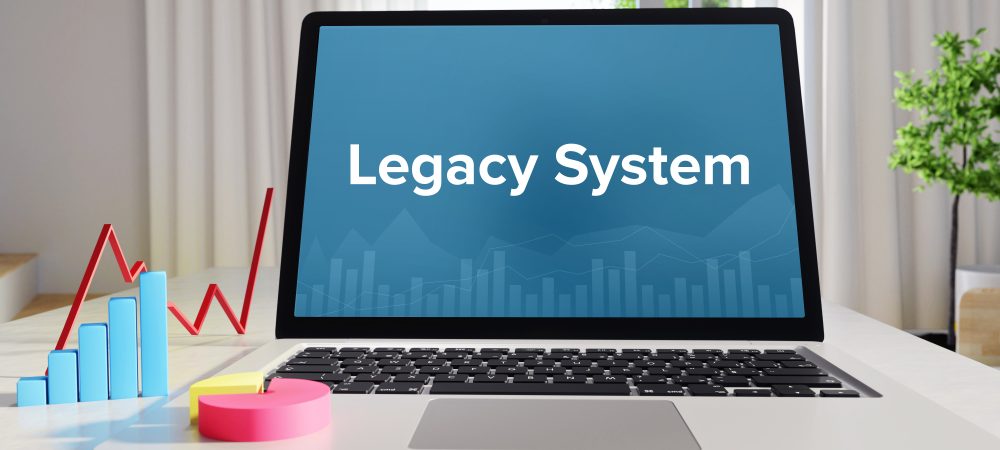Manuj Desai, CIO, STL, tells Intelligent CIO of taming the ‘necessary evil’ of legacy systems and integrating their processes into future tech functions.
As any CIO will confirm, one of the most challenging tasks on their radar is integrating inherited legacy technologies into their company’s ever-changing modern technology stack.
Legacy systems are often cumbersome, outdated, costly to maintain and frustratingly incompatible with modern technologies.
As tempting as it might be to do away with these legacy technologies, they still contain valuable data and often underpin countless important business functions and processes. That makes them a necessary evil – it’s down to CIOs and their teams to ensure that this evil is tamed and integrated in the most efficient way possible.
The first step on this journey is all about discovery; discovery of data, discovery of the company’s current digital landscape and discovery of business flows and processes and how they interconnect.
The next step is creating a workable roadmap for integration, including timelines for testing and validation to see how a given solution might impact the company’s overall IT infrastructure.
Finally, and perhaps most importantly, stakeholders must be engaged, and integration options should be carefully considered – whether replacing existing legacy system components or migrating data from an existing system into a new platform.
To begin the journey of integrating legacy systems into a modernized digital infrastructure, the first step is to gain a comprehensive, all-encompassing understanding of the organization’s digital landscape.
This entails identifying and mapping out all applications, systems and data sources utilized within the organization, while also comprehending their interdependencies and relationships. This panoramic view of the organization’s digital footprint is crucial in identifying redundant and mission-critical systems, which can then be prioritized for integration.
Subsequently, the organization must adhere to the adage ‘garbage in, garbage out.’

After establishing the overall structure of the IT systems, it is imperative to ensure that the data being stored is relevant, up-to-date and aligns with the organization’s future plans.
Legacy systems often contain outdated, inconsistent or duplicated data, which can cause issues during and after integration. Cleansing and organizing the data before proceeding with further actions is of utmost importance.
Identifying process flows is crucial in translating legacy system business rules into actual business processes, whether modernizing or integrating with contemporary technologies.
Discovery is all about asking the right questions and then mapping the answers, but it isn’t a perfect process. During discovery, processes will often look incorrect or be overlooked entirely, leaving gaps and questions that go unanswered. Process mining is a more robust solution, allowing the identification process to be fully automated so there are fewer unanswered questions and the risk of misinterpretation is all but eliminated.
Process mining aids discovery by automatically extracting data from system logs and creating process models for understanding and improving legacy system operations. It can also ensure consistency between the legacy and new system – crucial for successful integration.
With everything on the table, it will be easier for a CIO and their team to see the scale of the challenge when it comes to dealing with their legacy architecture, allowing them to manage expectations around any integration project and its associated costs.
After completing the discovery process, create a roadmap for integrating legacy technologies into the new technology stack. Include a timeline for integration, as well as testing and validation plans to ensure smooth functionality without disrupting business operations. This roadmap should consider long-term benefits such as efficiency, cost savings and improved customer experiences, while also addressing potential challenges. Additionally, stakeholder involvement is crucial in pitching the benefits and costs of integrating legacy systems to the broader business.
One thing is certain in the world of modern business – silos are bad. When plans and information are siloed, delays and drawbacks are inevitable. CIOs should be fully engaged with business leaders, end-users and IT staff to understand how each legacy technology is used and what the potential repercussions of the integration plan might be. This engagement will help ensure seamless integration and that all stakeholders are on board with the changes.
We’ve now set the scene in terms of how complex legacy system integration can be.
Ultimately, it will be down to the CIO and their team to carefully evaluate which integration options are best suited to the needs of their business. Some of those options might include the following:
- Replacing a legacy system with a modern platform
This approach best suits legacy technologies that are outdated, difficult to maintain, or lack vendor support. The process of typically involves migrating data from the legacy systems to the new platforms, reconfiguring business processes and training end-users on the new systems.
- Integrating legacy systems with modern platforms
This cost-effective approach best suits legacy technologies that still provide value but lack integration capabilities with modern platforms. Integration typically involves implementing middleware or integration software that allows legacy systems to communicate with modern platforms.
- Augmenting legacy systems with modern technologies
Best suited to legacy technologies that require additional functionality or capabilities that are not available in the legacy system. The process typically involves implementing new software or hardware components that integrate with legacy systems and provide additional functionality.
- Migrating data from legacy systems to modern platforms
This is where ‘garbage in, garbage out’ becomes absolutely critical. The process involves identifying data to be migrated, exporting the data from legacy systems, cleaning the data and importing the data into modern platforms. It can be a considerable undertaking but will allow the business a “fresh start” in terms of getting its systems and processes up to speed.
- Virtualizing legacy systems
Ideal for legacy technologies that are challenging to replace, integrate or upgrade with modern technologies. It involves creating a virtual machine that runs the legacy system, which can be accessed by modern platforms. Virtualization can be cost-effective compared to system replacement or integration though it may require additional hardware resources. Moreover, virtualization provides a secure container for the legacy system, mitigating inherent security risks associated with legacy systems.
Click below to share this article

